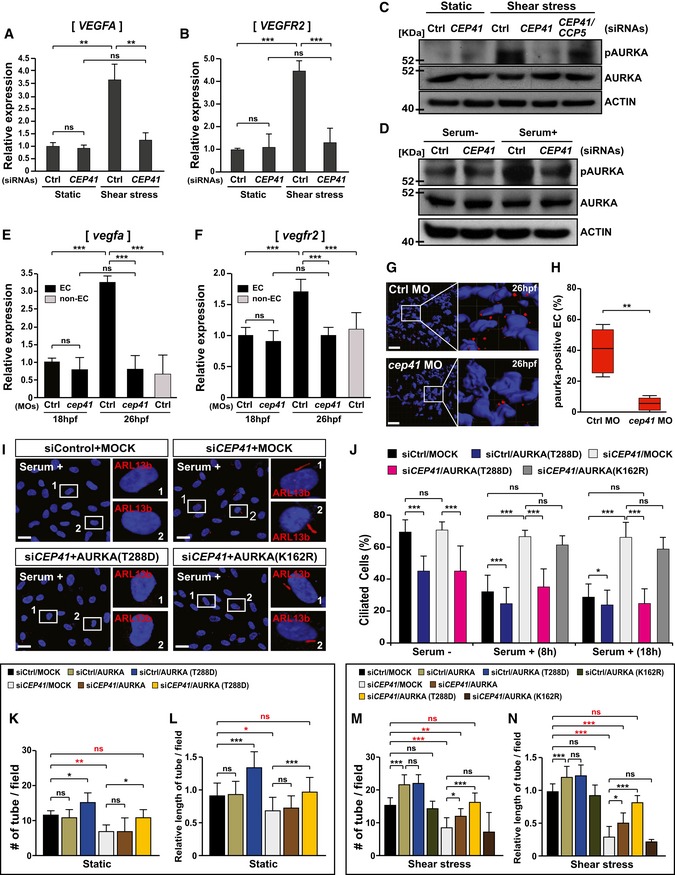Figure 6
Immunoblot assays for phospho‐AURKA and AURKA were performed in HUVECs (C) and hTERT‐RPE1 cells (D) transfected with the indicated siRNAs. Protein levels were normalized against β‐actin in the same blots. The mRNA levels of zebrafish Control and

